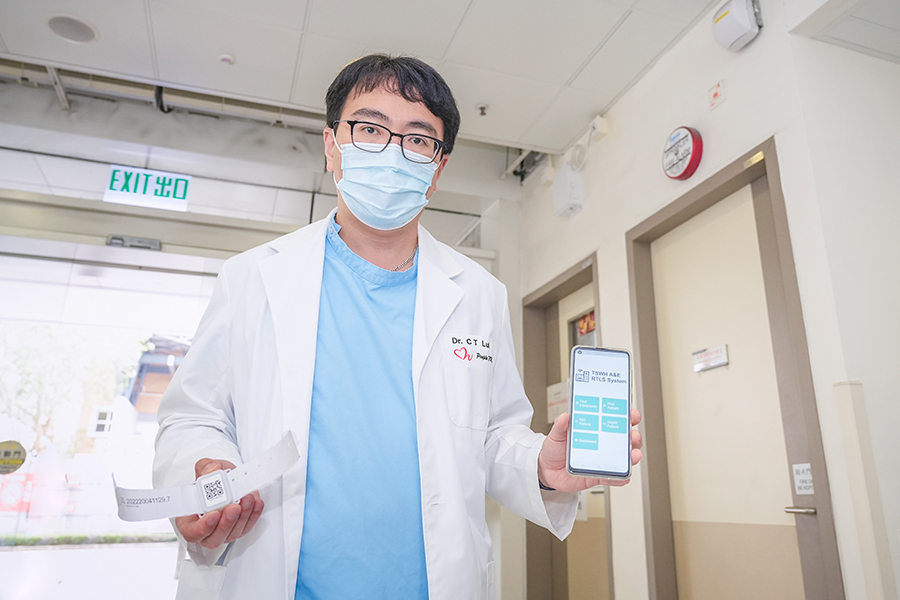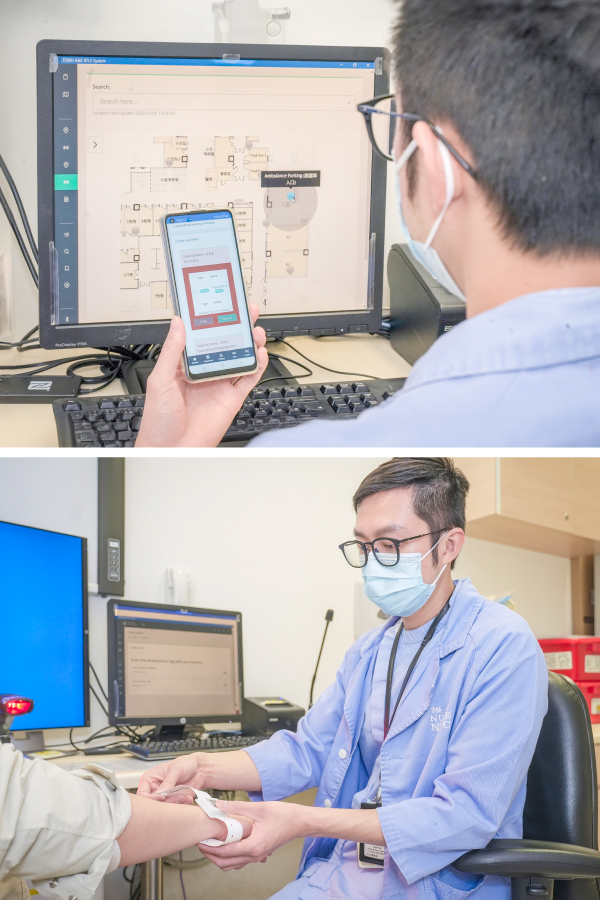Hi-tech wristbands help locate vulnerable patients to enhance safety
 Tin Shui Wai Hospital (TSWH) is one of the hospitals piloting the smart hospital project and has started implementing the use of Bluetooth Low Energy (BLE) technology to locate high-risk patients in its Accident and Emergency (A&E) Department since September last year. After a patient wearing a BLE wristband and staying in A&E designated areas, colleagues can tell his locations through the system. TSWH A&E Associate Nurse Consultant Lai Siu-on explains the patient will trigger a geofencing alert when he leaves the department, setting off an alarm on the nursing station dashboard and simultaneously notifying on-duty nurses by instant messaging on working mobiles.
Tin Shui Wai Hospital (TSWH) is one of the hospitals piloting the smart hospital project and has started implementing the use of Bluetooth Low Energy (BLE) technology to locate high-risk patients in its Accident and Emergency (A&E) Department since September last year. After a patient wearing a BLE wristband and staying in A&E designated areas, colleagues can tell his locations through the system. TSWH A&E Associate Nurse Consultant Lai Siu-on explains the patient will trigger a geofencing alert when he leaves the department, setting off an alarm on the nursing station dashboard and simultaneously notifying on-duty nurses by instant messaging on working mobiles.
The wristbands are used on high-risk patients, including those with dementia or at risk of self-harming. They will be clearly explained during triage. A&E Consultant of the New Territories West Cluster Dr Lui Chun-tat (above photo) says due to patient privacy, the scope of surveillance is limited to locations within A&E. BLE wristbands help staff locate patients more easily and ensure their safety. A survey found that most colleagues considered the technology useful for avoiding patients leaving A&E before treatment completes.
 “Sometimes, patients suffering from visual or hearing impairments may not be able to hear the announcements or see the screen in waiting hall,” Dr Lui explains. “Colleagues call out again and again, but no one answers. Now, they can use the BLE system to locate patients and provide timely care.”
“Sometimes, patients suffering from visual or hearing impairments may not be able to hear the announcements or see the screen in waiting hall,” Dr Lui explains. “Colleagues call out again and again, but no one answers. Now, they can use the BLE system to locate patients and provide timely care.”
Other common patient risks in A&E includes falls and deterioration. The team is exploring for more advanced wearables which monitor patient’s vital signs and notify fall incidents, on top of locating and geofencing. The project is planned to be piloted in A&E of TSWH this year for high-risk patients. The advanced all-in-one wearable will allow staff to closely monitor vulnerable patients with an alarm that sounds on the nursing station dashboard and the mobile phone of duty nurses when there is change in patients’ condition.